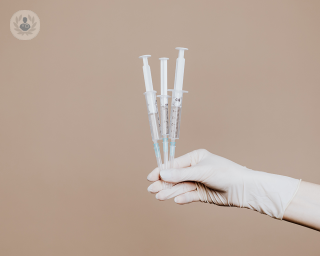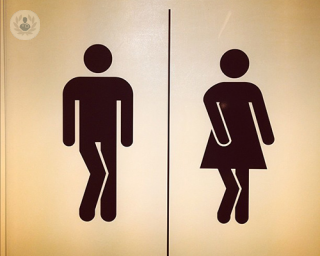Urinary incontinence in women
What is urinary incontinence?
Urinary incontinence is the involuntary leaking of urine, and it occurs more often in women than in men. Some women may find a few drops of urine are let out while running, or coughing, while others may have a strong urge to urinate over a long period of time.

There are two main types of urinary incontinence: stress incontinence and urge incontinence.
The more common of the two is stress incontinence, which is said to affect up to one in every four women. Women's chances of experiencing stress incontinence increases if they have previously given birth. Stress incontinence is characterised by an involuntary loss of urine upon physical exercise or physical exertion.
Urge incontinence is less common, affecting roughly one in every 13 women, and is typically characterised by an intense urgency to pass urine and the inability to delay the passing of urine.
Mixed incontinence may be experienced by some women when they suffer from both loss of urine when physically exerting themselves and a desperate need to pass urine. This can occur in one in 20 women.
What are the main causes of urinary incontinence in women?
There are many causes of both stress incontinence and urge incontinence in women. The main causes of stress incontinence include:
- loss of pelvic floor ligament and muscle support
- loss of sphincter strength and support
The main cause of urge incontinence is overactive bladder syndrome.
What are the main risk factors for women?
The main risk factor is age. Unfortunately, the older women become, the more likely they are to experience urinary incontinence. In fact, research has shown that up to one in every two women over the age of 70 suffers from some form of urinary incontinence. Other risk factors include obesity, a family history of urinary incontinence, and previous vaginal birth.
How is urinary incontinence in women treated?
Firstly, there are many non-surgical methods of treating urinary incontinence in women that one's GP will advise to see if symptoms improve. These include the following:
- lifestyle changes, such as consuming less alcohol
- pelvic floor exercises (where a woman will learn how to strengthen her pelvic muscles by squeezing them)
- bladder training
- absorbent pads
- medicine
There are then a wide variety of different surgical options for both types of urinary incontinence in women. The main surgical procedures that can help treat stress incontinence include:
- colposuspension
- sling surgery
- vaginal mesh surgery (this is no longer recommended in the UK)
- urethra bulking agent
- artificial urinary sphincter
The main surgical procedures for urge incontinence, then, include the following:
- botulinum toxin A injections
- sacral nerve stimulation
- posterior tibial nerve stimulation
- augmentation cystoplasty
- urinary diversion
















